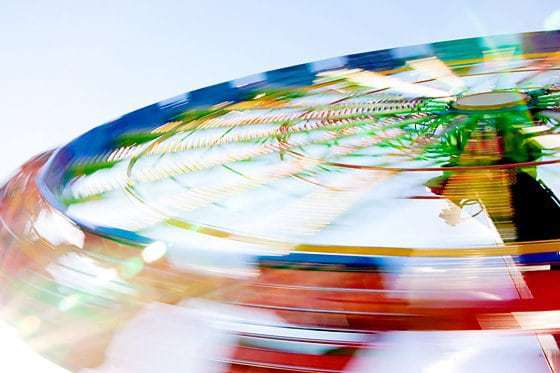
Unfortunately, it’s one of those photography “rules” that is often misunderstood. So, today we’re going to dive a little deeper into how to use negative space to transform your images.
What is Negative Space?

If the subject of a photo is considered “positive space,” then negative space can be defined as the area surrounding the main subject. For example, in the above image, the woman’s face is the main subject. The blank space in front of her is negative space.
Negative space emphasizes the main subject of a photo by drawing your eye towards that subject. In some cases, it allows the subject to “move,” and in other cases, it creates “breathing room,” that give your eyes a place to rest. Negative space can prevent your image from appearing too cluttered and will ultimately create a a more appealing image.

Negative space, when used effectively, provides a natural balance against the positive space within the photo. Getting this balance right isn’t always easy and can be rather subjective. Just keep practicing until it becomes natural.
How Do You Use Negative Space?
If you consider yourself a photography novice, you may be struggling with what does or does not look good with regard to composition. Just as technical skills are developed over time, so does your eye.
Therefore, before you can think about how to use negative space, you must first consider the story you are trying to tell with your photograph. For example, in the image below, you see a small baby in his crib. This may not seem like much to you, but to his mother, she will remember how tiny he was in his crib those first few weeks. By keeping the composition simple and using negative space, the focus stays on this sweet baby boy while also telling a story.

You can do the same thing with your own photographs.
When framing your images, adjust your composition (you will likely need to physically adjust yourself/your angle/your position while looking in your viewfinder) until the positive and negative spaces in the shot are balanced against one another. Allow plenty of empty space around your main subject. You can always move in closer for additional shots (or crop in post-processing), but it is difficult (and often impossible) to add back negative space.

Practice the art of negative space by using one of your child’s toys and experimenting with various compositions.
We love the idea of placing the toy in the right side of the frame to allow negative space on the left side. Then reverse such that the toy is on the left. Readjust the toy so it’s in the bottom third of the frame; and again in the upper third of the frame. Continue this experiment with other subjects: bugs, architecture, your children, etc. Over time, you’ll find that you prefer one side of the frame over another (for example, right handed people tend to shoot their images on the right hand of the screen).
We don’t expect you to master the use of negative space overnight. Like anything, it takes practice. Start by recognizing the main subject in your photographs and consider each individual element in your composition, which will lead to much stronger photographs over time.
Photo Credits: Ashley Sisk








































